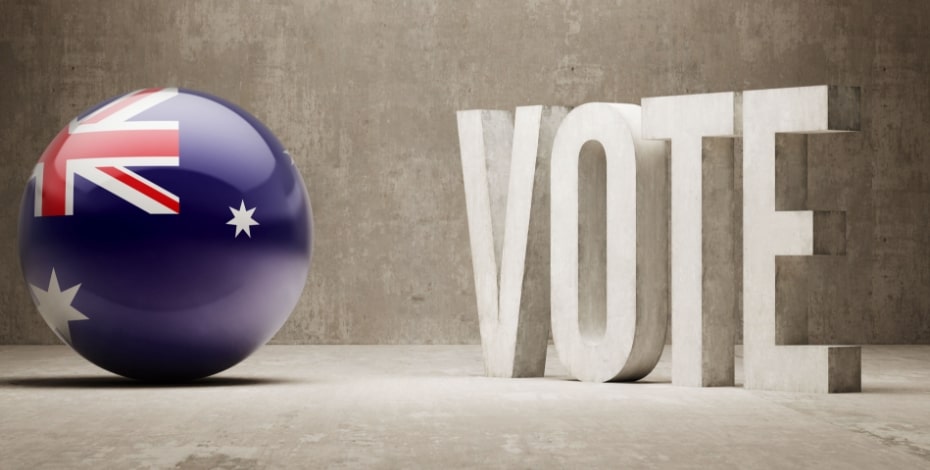
A COVID-19 federal election

APA General Manager, Policy and Government Relations Simon Tatz considers the upcoming federal election and the role of our transition out of the pandemic.
Australia goes to the polls soon, either later this year or early in 2022.
The next federal election will take place in an unknown environment.
Australia will be emerging from COVID-19.
We don’t know what our economic and social situation will be or even if it will be consistent across the states and territories.
Yet what is almost certain is that the next election will be about one issue and one issue only—how we transition out of the coronavirus pandemic.
There are historical precedents that show us how certain elections become focused predominantly on one main issue to the exclusion of the many other serious and important policies that affect most of us.
When electioneering is concentrated on a single issue or theme, it is all but impossible to attract media and public interest in other matters, even if they are about our health and wellbeing.
Frustratingly, we have not yet had a federal election where health and reform of the health system are front and centre of political debates.
While Labor did use the so-called ‘Mediscare’ campaign as an issue in 2016 and almost won that election, it was more about highlighting potential threats to the Medicare system than a campaign about health reform.
Although primary care is a federal responsibility, it is at state and territory elections that hospital funding, beds, waiting times, ambulance services and investment in regional health services are very much at the fore of campaigning.
Most people engage with the health system at critical times, such as when they need hospital services or experience a painful and distressing situation where they cannot access appropriate and affordable care.
This is why elections try to turn our attention to hospital beds and staffing.
Bricks and mortar and ‘deliverables’ are what political parties try to ‘sell’ at election time, with promises of multimillions on something defined and tangible.
Preventive health and issues such as transforming our outdated referral pathways and fee-for-service model are not ‘sexy’ election issues easily distilled into pithy slogans.
The last time a manifesto of reform was presented at an election was in 1993—Liberal leader John Hewson’s 650-page Fightback!
This articulation of his reforms became a big target, which Paul Keating was able to destroy.
Since then, elections have been based on ‘small target’ strategies, with the major political parties seeking to engage voters on ‘their’ issues and to polarise and divide voters on choices over just one or two issues.
In 1996, the Keating-Hawke Labor Government had reached its time.
Like the Kevin 07 election, this was a ballot where change was the underlying message.
Governments (in Western democracies) reach a natural use-by date; they become tired and voters sense this.
Australia has rarely had one-term governments; voters tend to support a party over two or more elections.
By 1998, Australia’s economy was very strong and the main campaign issue was John Howard’s promise to introduce a goods and services tax, a policy Labor absolutely opposed.
The election became a ‘referendum’ on the goods and services tax.
The returned Coalition government viewed its success as arising from a strong campaign for taxation reform, the single most prominent issue of the election.
In 2001, polling indicated that Kim Beazley’s Labor would win the election until the Tampa refugee crisis and the 9/11 terrorist attacks in the USA turned the election campaign towards national security, asylum seekers and border protection.
It is a widely held view by election experts that in times of crisis, voters stay with incumbent governments.
Australians next voted in October 2004.
This election was arguably more about personality and the respective leaders than any previous poll.
Voters were given a choice between the experienced Prime Minister John Howard and the inexperienced Labor leader Mark Latham.
The ‘issues’ of that election were relegated because the attention was on these two men.
In 2007 we again saw a ‘personality’ election—the vibrant Kevin Rudd challenging a tired government.
Issues of healthcare and health reform were a component of Kevin Rudd’s agenda, although by now Australia’s elections had become ‘presidential’ in style, with the public pushed to focus on leaders over policies.
Historical precedence indicates that the next federal election will again be based on a single issue and personality.
The frustrating effect of this style of campaigning is that the issues the APA is pursuing (encapsulated in the APA’s Pre-Budget Submission, A Strong Physiotherapy Workforce for a Healthy Australia) may not be raised by the media and in debates.
There’s no crystal ball here, so it may well be that healthcare is a mainstream election issue, with the government’s 10-year Primary Health Care Plan and 10-year National Preventive Health Strategy given more prominence because of COVID-19.
From an APA policy advocacy stance, this makes our job much easier.
We can seek the areas that the major parties are pursuing and try to intercede in the public discourse.
Post-COVID-19 physiotherapy care and the implementation of the aged care reforms may be such avenues.
Elections are massive, long-running events with every sector, association, interest group and portfolio stakeholder trying to get its voice heard and promoted in the public arena.
The next election should be about healthcare and about investing in the reforms needed to meet demand and need.
© Copyright 2024 by Australian Physiotherapy Association. All rights reserved.






